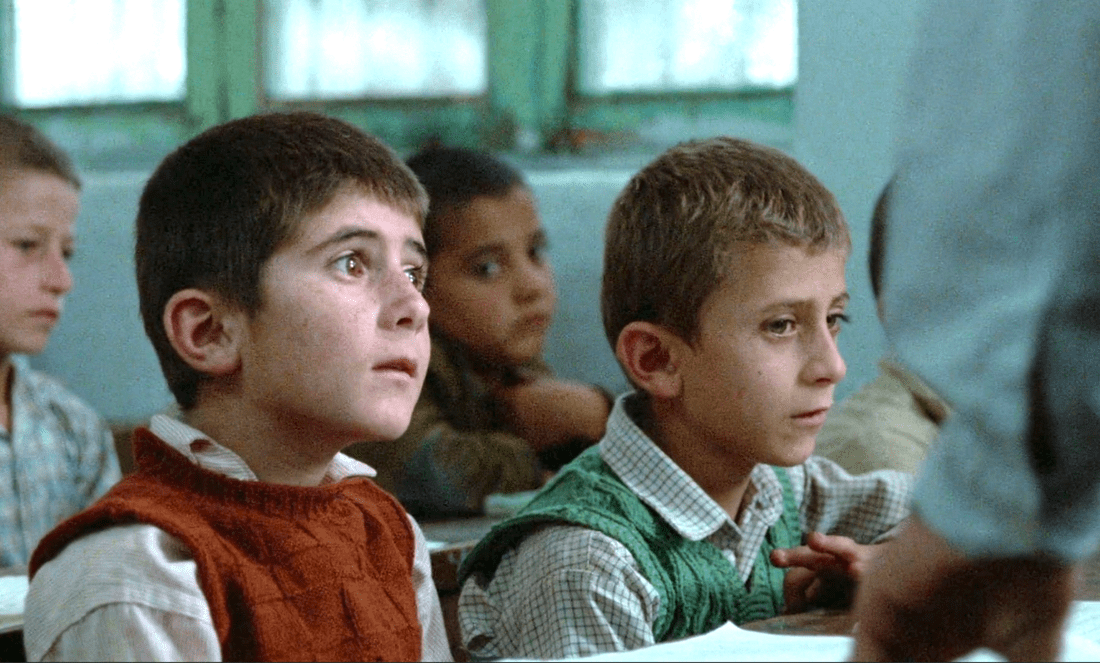
Between the films Onibaba, directed by Kaneto Shindo in 1964, and Woman In the Dunes, directed by Hiroshi Teshigahara also in 1964 there are only five characters and two locations. Both films are stripped down to a few essential elements. Without distractions, we are made to examine each element more closely. A simple text or film can allow for a wider variety of interpretations. If the facets of a given film are not completely described and nailed down, and if they are kept simple they allow us to interpret them in a way that a more complex film with fully rendered elements might not.

In both films, the physical environment is as much a participating character as the actors. The reeds in Onibaba and the sand in Woman In the Dunes oftenappear alone on screen without the presence of actors or other distractions. The landscape is an integral and expressive facet of the narrative.
When the actors do appear it is often in comparison to the environment. Both films contrast their environments with the look and feel of human skin. There is an emphasis on the tactile. We watch sweat bead and drip, we see sexual encounters close up and imagine the feel of scratchy reeds or the clinging texture of sand.
Both environments are sensual but also invasive and oppressive. They are beautiful but unrelenting, always shifting. They respond to the characters’ presence but they also swallow up and erase them. Both environments contain existential dread. They existed before the characters got there and will exist after they have disappeared. There will be no trace of the lust, drama, and violence that temporarily disrupted it.

One major difference between the two environments is sound. Onibaba’s reeds are very loud, whereas the sand in The Woman In The Dunes is silent. However, both soundscapes function to emphasize their presence. They both dwarf their characters.
Both environments seem endless. We never see anything off in the distance, just more sand, or more reeds. This gives both films a kind of cosmic universality as if they represent the entire world. It's as if the reeds represent all environments, or they do not represent an environment at all but are a representation of our inner world which is boundless and disorienting. It has no borders or limits, only an endless expanse in which we struggle.

Both environments are sensual but also invasive and oppressive. They are beautiful but unrelenting, always moving, and shifting. They respond to the characters’ presence but they swallow it up and erase it. Both environments contain existential dread. They existed before the characters got there and will exist after they have disappeared. The environment will erase any trace of the lust, drama and violence that temporarily disrupted it.
One major difference between the two environments is sound. Onibaba’s reeds are very loud, where as The Woman In The Dunes’s sand is silent. However both soundscapes function to emphasize their presence. They both dwarf their characters.
Both environments seem endless. We never see anything off in the distance, just more sand, or more reeds. This gives both films a kind of cosmic universality as if they represent the entire world. Its as if the the reeds represent all environments, or they do not represent an environment at all but are a representation of our inner world which is boundless and disorienting. It has no borders or limits only an endless expanse in which we struggle.
The homogenous, and boundless environments give both films a dreamlike quality. We see only what is necessary to create the story. It is not tied to anything mundane or grounding. In a dream we often find ourselves in places that do not necessarily tie us to the larger world.
Similarly this untethered reality that is presented makes these films feel like folktales or mythology. They transpire in a timeless world where their symbols and metaphors can easily be updated to refer to a myriad of contexts.
The sand never stops just as time never stops. The sand doesn’t care, it doesn’t respond, it just keeps piling up. The reeds are perhaps more responsive. They are shot swaying slowly or rustling wildly. They are shot in slow motion, or in close up. They more readily reflect what is happening in them, but they remain ultimately unchanged. They may get temporarily trampled but they sway back into place.
In both films the actors as well as the characters must struggle to make a place in their surroundings. They are in danger of being swallowed up, upstaged by the blind, unthinking hand of nature.

If you enjoyed this article click here for more
www.filmofileshideout.com/archives/a-comparison-of-the-turin-horse-and-the-naked-island




[…] Felix and Betty remind me of the nameless widow in Hiroshi Teshigahara’s Woman In The Dunes(a personal favorite). Betty and Felix’s illusions and desperation are a trap ready to capture […]